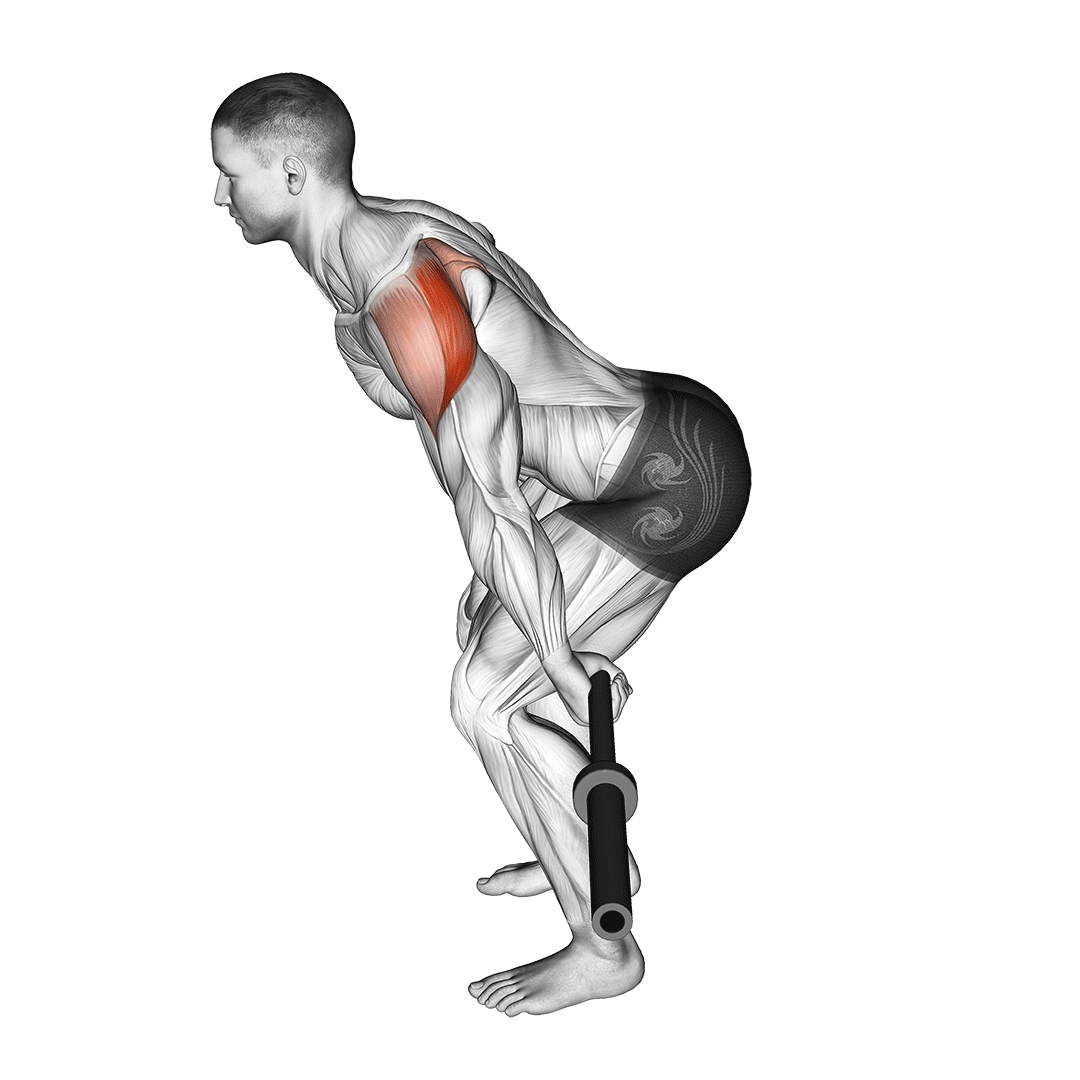The Barbell Skier exercise effectively enhances shoulder power by specifically targeting your deltoid muscles, vital for shoulder stability and mobility. Adding this exercise to your routine promotes broader shoulders and improves upper body strength, facilitating everyday activities and boosting performance in various sports.
This dynamic movement focuses on the anterior and lateral deltoids while also engaging the core, back, and legs, making it a full-body challenge that increases strength and coordination. For optimal results and to prevent injury, incorporate the Barbell Skier into your workouts two to three times a week. Begin with lighter weights to master your form before progressing to heavier resistance.
To perform the exercise, stand with feet shoulder-width apart, grasping a barbell at hip level. Hinge at the hips to lower the barbell toward your knees while keeping your back flat. Explosively lift the barbell to shoulder height, flaring your elbows outward, and then return to the starting position with control. Focus on maintaining proper form to effectively engage your muscles and avoid strain. With just a barbell needed, the Barbell Skier is an impactful addition to any strength training program, enhancing shoulder strength and overall athletic performance.
How to Do a Barbell Skier

Begin by standing upright with your feet shoulder-width apart, holding a barbell with an overhand grip at hip level, arms slightly bent. Keep your core engaged and shoulders back.
Level Up Your Fitness: Join our 💪 strong community in Fitness Volt Newsletter. Get daily inspiration, expert-backed workouts, nutrition tips, the latest in strength sports, and the support you need to reach your goals. Subscribe for free!
Level Up Your Fitness: Join our 💪 strong community in Fitness Volt Newsletter. Get daily inspiration, expert-backed workouts, nutrition tips, the latest in strength sports, and the support you need to reach your goals. Subscribe for free!
- With a slight bend in your knees, hinge at the hips to lower the barbell towards your knees while maintaining a flat back.
- As you return to standing, explosively lift the barbell up to shoulder height, allowing your elbows to flare out to the sides.
- Lower the barbell back to the starting position in a controlled manner, engaging your delts throughout the movement.
- Repeat for the desired number of repetitions, ensuring a smooth and steady tempo.
Inhale as you lower the barbell and exhale during the upward movement to maintain proper breathing rhythm.
Common Mistakes
- Improper Back Position: A common mistake is rounding the back during the hinge. This can lead to strain and injury. To avoid this, focus on maintaining a neutral spine throughout the exercise by engaging your core and keeping your chest up.
- Using Excessive Weight: Many lifters start with a weight that is too heavy, compromising form and effectiveness. Start with a manageable weight to focus on mastering the movement before increasing the load.
- Neglecting Elbow Position: Allowing the elbows to drop in rather than flaring out during the lift can diminish shoulder engagement. Concentrate on keeping your elbows wide as you raise the barbell to enhance the activation of the deltoids.
- Fast Tempo: Performing the exercise too quickly can lead to loss of control and poor form. Maintain a slow and controlled tempo during both the ascent and descent phases to maximize muscle engagement and minimize injury risk.
- Poor Breathing Technique: Holding your breath can lead to increased intra-abdominal pressure and dizziness. Remember to synchronize your breathing with the movement; inhale while lowering, and exhale while lifting.
Benefits
- Enhances shoulder strength by targeting the deltoids, promoting muscular development and definition.
- Improves overall upper body coordination, as the explosive movement engages multiple muscle groups simultaneously.
- Increases core stability due to the need for engagement throughout the lifting phase, benefiting overall posture.
- Promotes flexibility and mobility in the shoulder joints, contributing to a well-rounded fitness routine.
- Can boost cardiovascular endurance when performed with higher repetitions, integrating strength training with aerobic benefits.
Exercise Variations
Alternative Exercises
Safety Precautions
Before beginning the Barbell Skier exercise, it is crucial to ensure that your body is adequately warmed up to prevent injuries. Incorporate dynamic stretches focusing on your shoulders, hips, and legs to increase blood flow and enhance flexibility. A proper warm-up helps enhance performance and prepares your body for the demands of the movement.
When executing the Barbell Skier, proper form is essential to avoid strain on your back and shoulders. Keep your core engaged and back flat throughout the exercise. Avoid rounding your back as you lower the barbell, as this can lead to serious injuries over time. Instead, focus on hinging at the hips while maintaining a neutral spine to ensure that the load is distributed evenly across your body.
Lastly, consider the weight of the barbell you are using. It’s important to start with a manageable weight that allows you to maintain proper form. Gradually increase the weight only as you become more comfortable with the movement. Utilizing weights that are too heavy may compromise your technique and increase the risk of injury.








